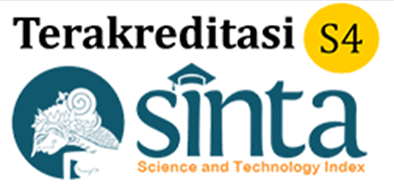Kaum dan Nagari: Eksistensi Kaum dalam Pembangunan di Nagari Pasia Laweh Kecamatan Palupuah Kabupaten Agam
Abstract
Kaum is one of three forms of kinship groups in Minangkabau society. Kaum is a collection of several paruik, and suku is a collection of several kaum and nagari consists of at least four suku. The existence of paruik, kaum and suku in the lives of nagari people is still felt to this day. The existence of this group is still felt in Nagari Pasia Laweh, including in development activities. This research will look further at the existence of groups in development in Nagari Pasia Laweh, Palupuah District, Agam Regency. The research method used is qualitative with descriptive analysis. Data collection techniques use interviews and documentation. The results of the research show that the people of Nagari Pasia Laweh still live in groups called tribes. People are the most important element in development in Nagari Pasia Laweh, and every stage of development is carried out by people. sahino samalu motto makes all people want to be actively involved in development activities, in order to advance the nagari and meet the needs of the people.
References
Addiarrahman, A. (2019). Kearifan Lokal dan Aktifitas Filantropi Perantau Sulit Air Sepakat (SAS) dalam Menghadapi Revolusi Industri 4.0. INFERENSI: Jurnal Penelitian Sosial Keagamaan, 13(1), 177–200. https://doi.org/10.18326/infsl3.v13i1.177-200
Adisasmita. (2006). Pembangunan Perdesaan dan Perkotaan. Graha Ilmu.
Astra, I. G. (2004). Revitalisasi Kearifan Lokal dalam Memperkokoh Jati Diri Bangsa di Era Global. Fakultas Sastra Universutas Udayana dan Balimangsi Press.
Bagus Brata, I. (2016). KEARIFAN BUDAYA LOKAL PEREKAT IDENTITAS BANGSA. Jurnal Bakti Saraswati, 05(01).
Moleong, L. (2010). Metodologi Penelitian Kualitatif. Remaja Rosdakarya.
Murray, M. R., & Greer, J. V. (1999). The changing governance of rural development: State‐community interaction in Northern Ireland. Policy Studies, 20(1), 37–50. https://doi.org/10.1080/01442879908423765
Nugraha, aji S. (2020). Kearifan Lokal Dalam Menghadapi Pandemi Covid-19: Sebuah Kajian Literatur. Sosietas, 10(1), 745–753. https://doi.org/10.17509/sosietas.v10i1.26063
Osborne, S. P. (2006). The new public governance? In Public Management Review (Vol. 8, Issue 3, pp. 377–387). Taylor and Francis Ltd. https://doi.org/10.1080/14719030600853022
Putri, A. A. (2019). Partisipasi Perantau; Basamo Mambangun Nagari Di Nagari Sungai Pua Kabupaten Agam. Jurnal Administrasi Dan Kebijakan Publik, 4(1), 42–54. https://doi.org/10.25077/jakp.4.1.42-54.2019
Samiyono, D. (2018). Membangun Harmoni Sosial: Kajian Sosiologi Agama tentang Kearifan Lokal sebagai Modal Dasar Harmoni Sosial. JSW: Jurnal Sosiologi Walisongo, 1(2), 195. https://doi.org/10.21580/jsw.2017.1.2.1994
Suryono. (2001). Teori dan Isu Pembangunan. Universitas Malang Press.
Syamsurizaldi, S., Putri, A. A., & Sari, M. V. (2020). Raso Banagari : Ekspresi Sosial Perantau terhadap Pembangunan Kampung Halaman. Jurnal Sosiologi Walisongo, 4(1), 1–16. https://doi.org/10.21580/jsw.2020.4.1.5171
Copyright (c) 2024 Jurnal Manajemen dan Ilmu Administrasi Publik (JMIAP)

This work is licensed under a Creative Commons Attribution 4.0 International License.













